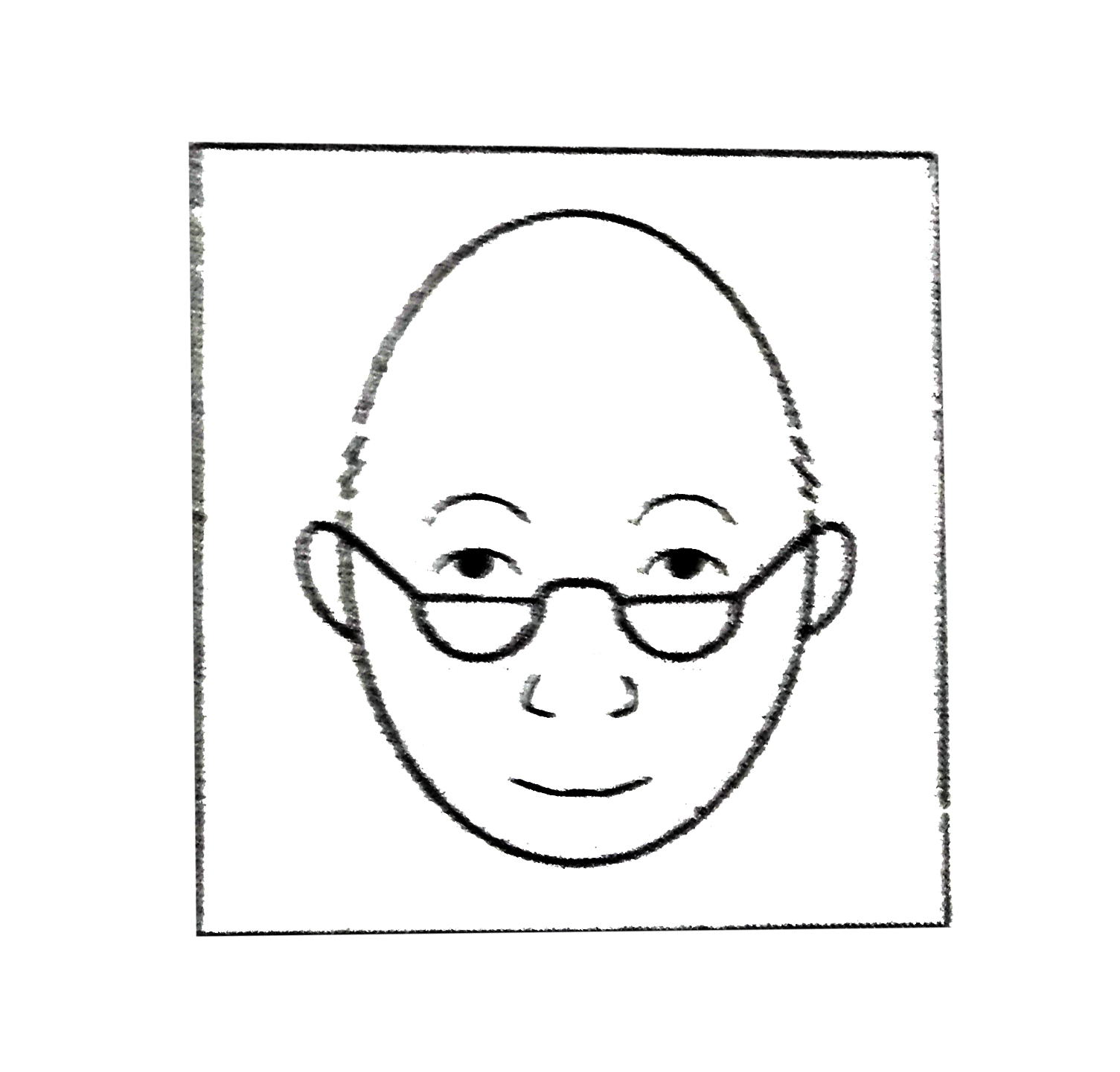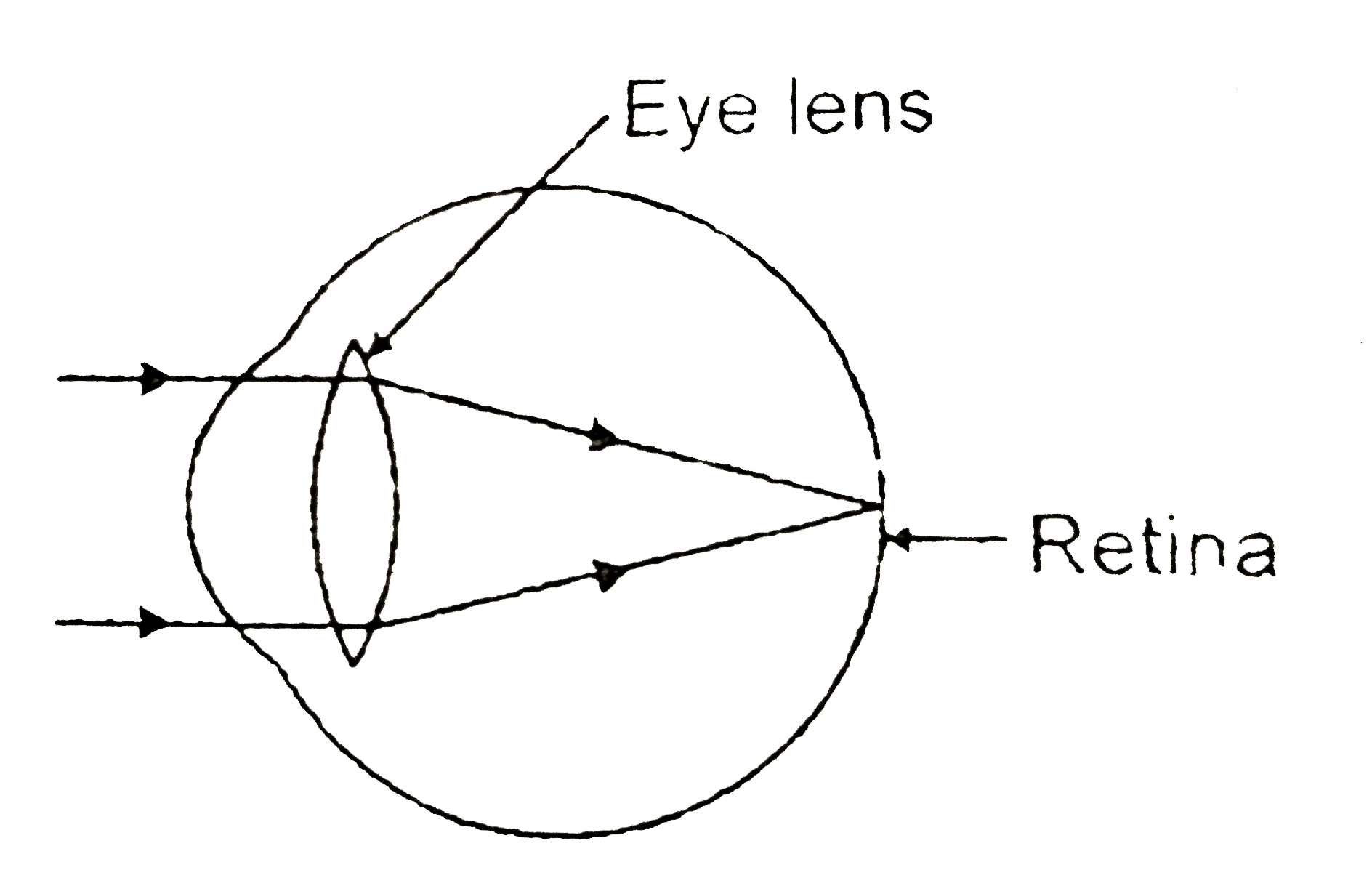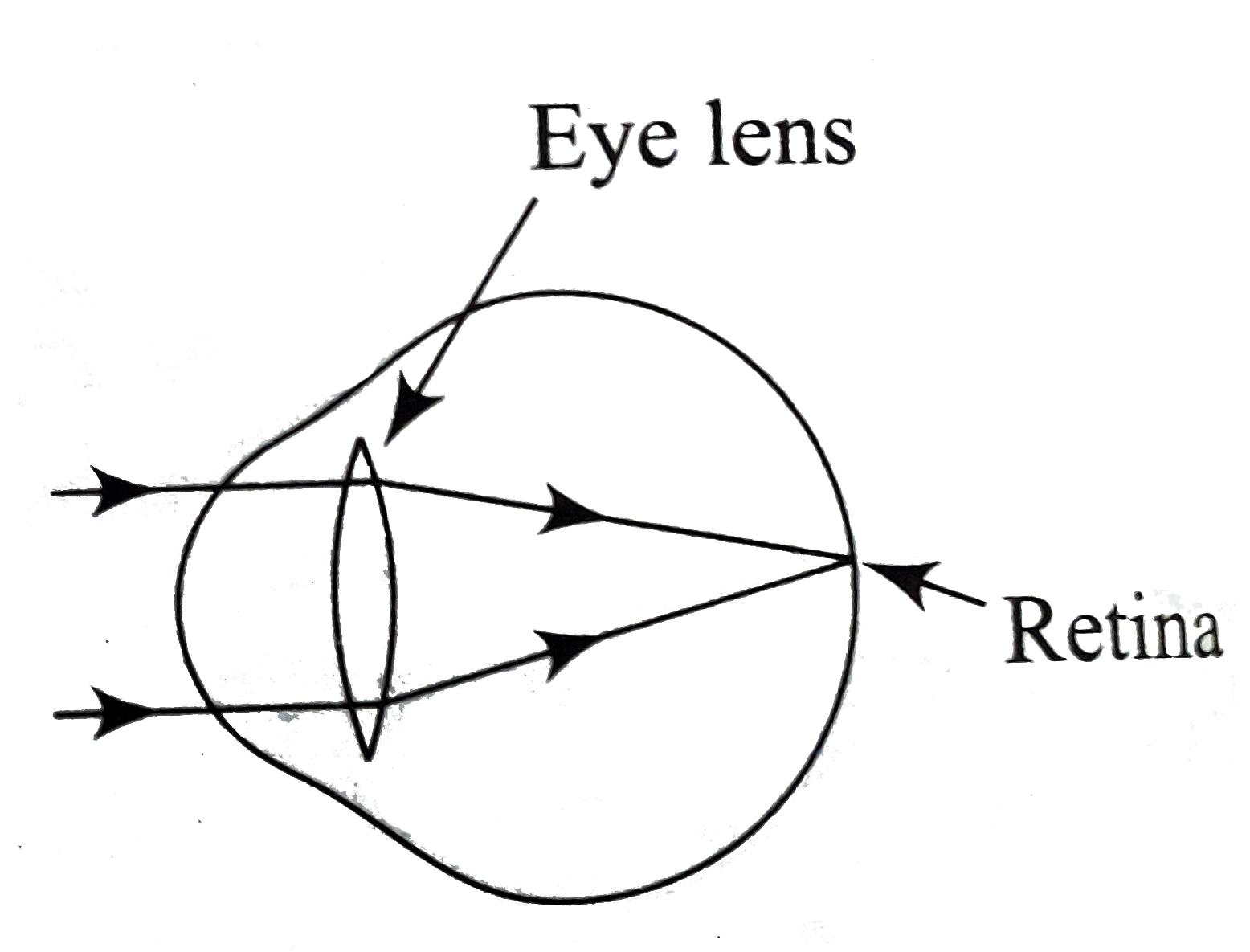The picture given here shows a person wearing 'half-moon' spectacles. What sort of eye-defect do you think he has ? Why are these particular spectacles useful to him ?

The correct Answer is:Long-sightedness (Hypermetropia) ; The convex lenses of spectacles form the image of nearby object at the near point of his eye.
NA
Topper's Solved these Questions
- THE HUMAN EYE AND THE COLOURFUL WORLD BOOK - LAKHMIR SINGH & MANJIT KAURCHAPTER - THE HUMAN EYE AND THE COLOURFUL WORLD EXERCISE - Short Answer Type Questions
7 Videos
- THE HUMAN EYE AND THE COLOURFUL WORLD BOOK - LAKHMIR SINGH & MANJIT KAURCHAPTER - THE HUMAN EYE AND THE COLOURFUL WORLD EXERCISE - Long Answer Type Questions
2 Videos
- THE HUMAN EYE AND THE COLOURFUL WORLD BOOK - LAKHMIR SINGH & MANJIT KAURCHAPTER - THE HUMAN EYE AND THE COLOURFUL WORLD EXERCISE - Very Short Answer Type Questions
13 Videos
- TEST PAPER 4BOOK - LAKHMIR SINGH & MANJIT KAURCHAPTER - TEST PAPER 4EXERCISE - SECTION A
10 Videos
Similar Questions
Sunny Dayal is a car driver working for Mr. Khanna. One day Sunny Dayal complained that he had difficulty in driving car because he could not see the distant traffic (car, buses, scooters, motorcycles and people) clearly though he could see the nearby things clearly. Mr. Khanna took Sunny Dayal to an eye hospital. The eye-specialist doctor checked and tested his eyes with various machines and gave him the name and power of lenses to be worn as spectacles. Mr. Khanna paid for the required spectacles for the driver. By wearing these spectacles, the driver could now see even the distant vehicles and people on the road clearly. He thanked Mr. Khanna for this.
(a) Name the eye defect Sunny Dayal is suffering from.
(b) What could be the two possible reasons for his eye defect ?
(c) What type of lenses do you think have been recommended for Sunny Dayal's spectacles and why ?
(d) Do you think Sunny Dayal has to wear these spectacles all the time ? Give reasons for your answer.
(e) What could have been the risk if Mr. Khanna had not taken sunny Dayal to eye specialist doctor for the correction of vision by wearing spectacles ?
(f) What values (or qualities) are displayed by Mr. Khanna ?
View SolutionWhat do you think his words mean? Why do you think he spoke those words?
View Solution
Knowledge Check
The power of spectacles lens required for a person is -5 dioptre when separation between spectacles and eye is 2 c. What will be the power of contact lens required by him?
A−5.25DB−4.54DC−3.2DD−5.75DThe ciliary muscles of eye control the curvature of the lens in the eye and hence can alter the effective focal length of the system. When the muscles are fully relaxed, the focla length is maximum. When the muscles are strained the curvature of lens increases (that means radius of curvature decreases) and focla length decreases. For a clear vision of curvature decreases) and focal length decreases. For a clear vision the image must be on retina. from eye-lens. it is about 2.5cmfor a grown-up person
A person can theoretically have clear vision of situated at any large distance from the eye. The smallest distance at which a person can clearly see is related to minimum possible focal length. The ciliary muscles are most straineed in this position. For an average grown-up person minimum distance of object sould be around 25cm.
A person suffering for eye defects uses spectacles (eys glass). The function of lens of spectacles is to form the image of the object within the range in which person can see clearly. The image of the spectacle-lens becomes object for eye-lens and whose image is formed on retina.
The number of spectacle-lens used for the remedy of eye defect is decided by the power of hte lens required and the number of spectacle-lens is equal to the numerical value of the power of lens with sign. for example power of lens required is +3D (converging lens of focal length 1003cm) then number of lens will be +3.

For all the calculations required you can use the lens formula and lens maker's formula. Assume that the eye lens is equiconvex lens. Neglect the distance between eye lens and the spectacle lens. A nearsighted man can clearly see object only upto a distance of 100cm and not beyond this. The number of the spectacles lens necssary for the remedy of this defect will be.A+1B−1C+3D−3The ciliary muscles of eye control the curvature of the lens in the eye and hence can alter the effective focal length of the system. When the muscles are fully relaxed, the focal length is maximum. When the muscles are strained, the curvature of lens increases. That means radius of curvature decreases and focal length decreases. For a clear vision, the image must be on the retina. The image distance is therefore fixed for clear vision and it equals the distance of retina from eye lens. It is about 2.5cm for a grown up person.
A perosn can theoretically have clear vision of an object situated at any large distance from the eye. The smallest distance at which a person can clearly see is related to minimum possible focal length. The ciliary muscles are most strained in this position. For an average grown up person, minimum distance of the object should be around 25cm.
A person suffering from eye defects uses spectacles (eye glass). The function of lens of spectacles is to form the image of the objects within the range in which the person can see clearly. The image o the spectacle lens becomes object for the eye lens and whose image is formed on the retina.
The number of spectacle lens used for th eremedy of eye defect is decided by the power fo the lens required and the number of spectacle lens is equal to the numerical value of the power of lens with sign. For example, if power of the lens required is +3D (converging lens of focal length 100/3cm ), then number of lens will be +3.
For all the calculations required, you can use the lens formula and lensmaker's formula. Assume that the eye lens is equiconvex lens. Neglect the distance between the eye lens and the spectacle lens.

Q. A near sighted man can clearly see ojects only upto a distance of 100cm and not beyond this. The number of the spectacle lenses necessary for the remedy of this defect will beA+1B1C+3D3
A person is advised to wear spectacles with concave lens. What type of defect of vision is he suffering from?
View SolutionA person is advised to wear spectacles with convex lenses. What type of defect of vision is he suffering from?
View SolutionVasantha is a domestic help (or maid) working at Mrs. Sharma's home. One day Vasantha complained to Mrs. Sharma that she had difficulty in reading the letter which she had received from her parents. Mrs. Sharma, realising that Vasantha had an eye defect, look her to an eye-specialist doctor. The doctor tested her eyes carefully and told Vasantha to wear spectacles for Vasantha. By wearing these spectacles, Vasantha could read and write easily. She was very happy and thanked Mrs. Sharma.
(a) What could be the eye-defect Vasantha was suffering from ?
(b) What could be the eye-defect reasons responsible for her eye-defect.
(c) What type of lenses do you think doctor recommended for Vasantha's spectacles ? Why ?
(d) Do you think Vasantha has to wear the spectacles all the time ? Give reason for your answer.
(e) What values are displayed by Mrs. Sharma in this episode ?
View SolutionA person is advised to wear spectacles with concave lenses. What type of defect of vision is he suffering from?
View SolutionA person is advised to wear spectacles with convex lenses. State the defect of vision he is suffering from.
View Solution
